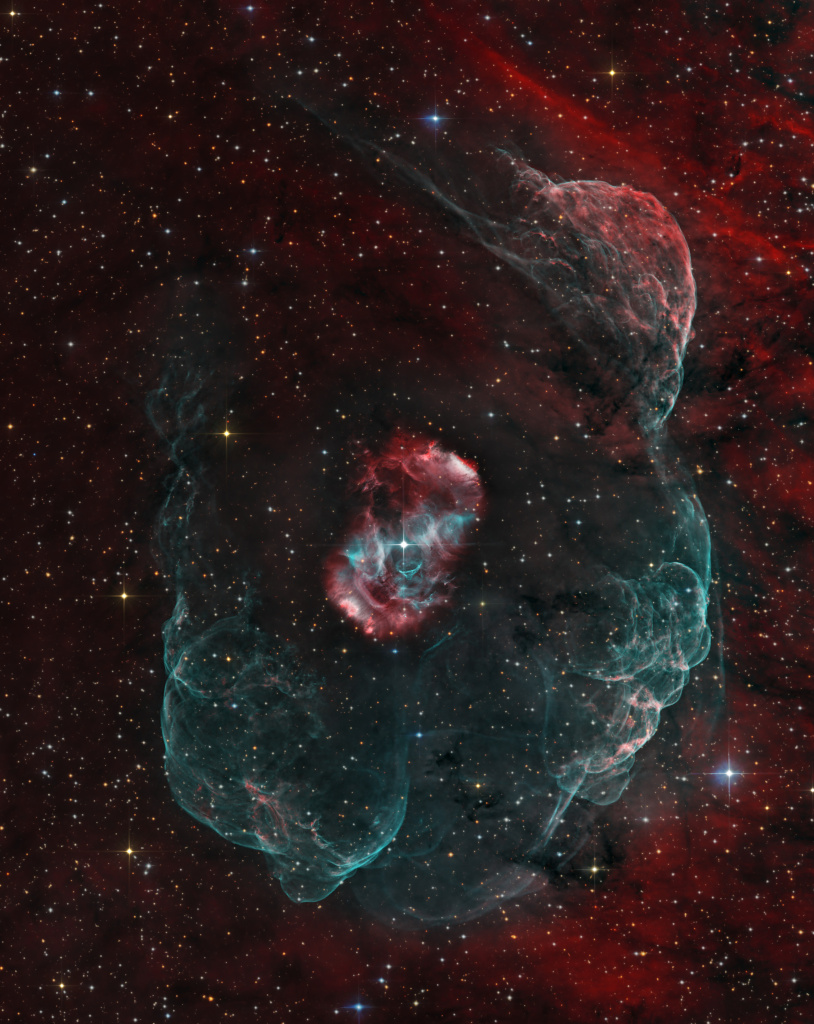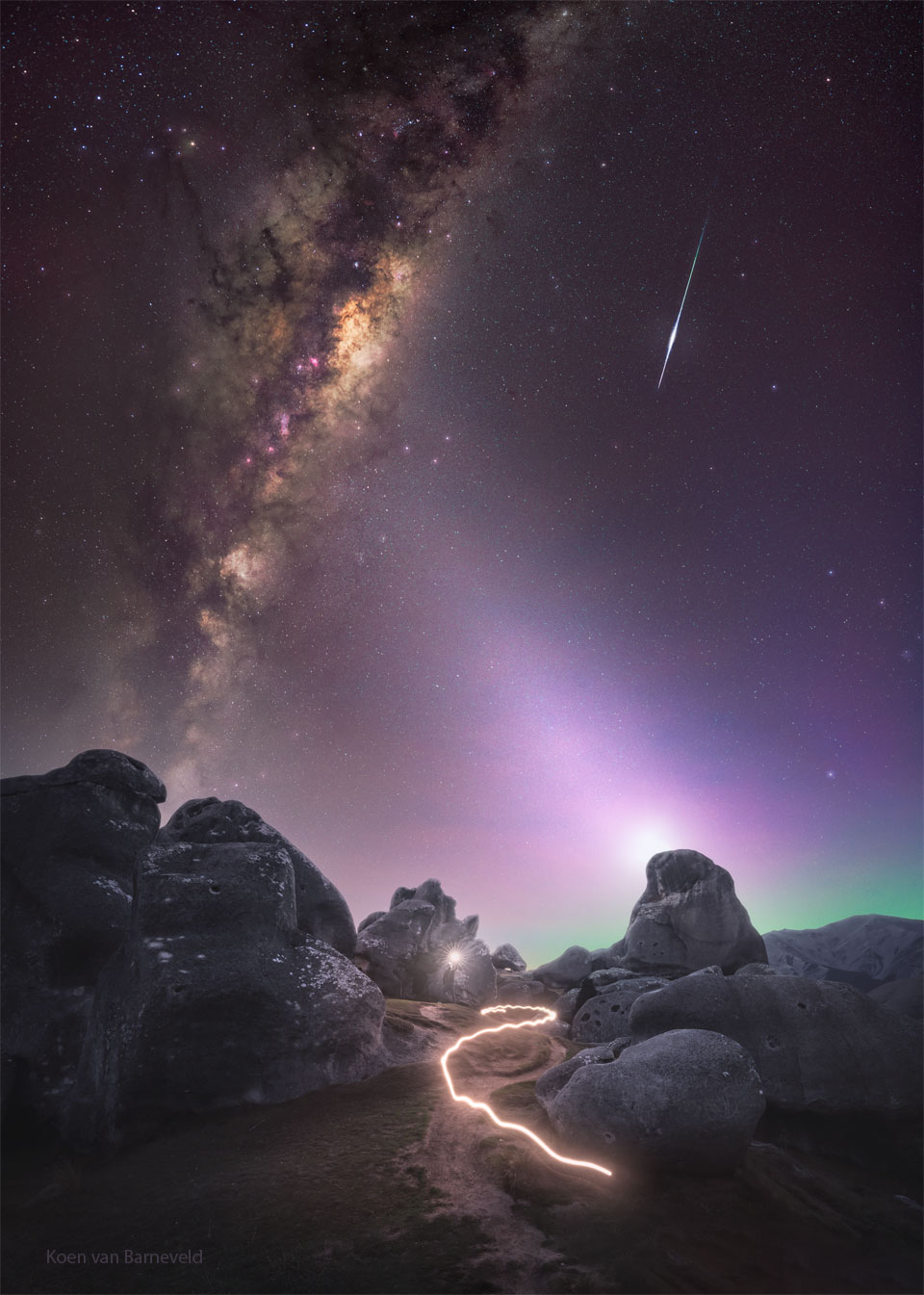Nombre total de pages vues
24/04/2025
LA TERRE VUE DU CIEL - Smog sur le bassin du Sichuan en Chine
SANTé/MEDECINE - Traitement du cancer du poumon (Nouvelles perspectives) - Conclusion (8/8)
ASTRONOMY - NGC 6164: A Dragon's Egg
2025 April 24
Image Credit & Copyright: Daniel Stern
Explanation: Beautiful emission nebula NGC 6164 was created by a rare, hot, luminous O-type star, some 40 times as massive as the Sun. Seen at the center of the cosmic cloud, the star is a mere 3 to 4 million years old. In another three to four million years the massive star will end its life in a supernova explosion. Spanning around 4 light-years, the nebula itself has a bipolar symmetry. That makes it similar in appearance to more common and familiar planetary nebulae - the gaseous shrouds surrounding dying sun-like stars. Also like many planetary nebulae, NGC 6164 has been found to have an extensive, faint halo, revealed in this deep image of the region. Expanding into the surrounding interstellar medium, the material in the halo is likely from an earlier active phase of the O star. This gorgeous telescopic view is a composite of extensive narrow-band image data, highlighting glowing atomic hydrogen gas in red and oxygen in greenish hues, with broad-band data for the surrounding starfield. Also known as the Dragon's Egg nebula, NGC 6164 is 4,200 light-years away in the right-angled southern constellation of Norma.
23/04/2025
LA TERRE VUE DU CIEL - L’ouragan Emily dans le golfe du Mexique
SANTé/MEDECINE - Traitement du cancer du poumon (Nouvelles perspectives) - Sensibilisation et politiques alimentaires (7/8)
ASTRONOMY - An Almost Everything Sky
2025 April 23
Image Credit & Copyright: Koen van Barneveld
Explanation: This surprising sky has almost everything. First, slanting down from the upper left and far in the distance is the central band of our Milky Way Galaxy. More modestly, slanting down from the upper right and high in Earth's atmosphere is a bright meteor. The dim band of light across the central diagonal is zodiacal light: sunlight reflected from dust in the inner Solar System. The green glow on the far right is aurora high in Earth's atmosphere. The bright zigzagging bright line near the bottom is just a light that was held by the scene-planning astrophotographer. This "almost everything" sky was captured over rocks on Castle Hill, New Zealand late last month. The featured finished frame is a combination of 10 exposures all taken with the same camera and from the same location. But what about the astrophotographer himself? He's pictured too -- can you find him?
22/04/2025
SANTé/MEDECINE - Traitement du cancer du poumon (Nouvelles perspectives) - Vers des thérapies ciblées (6/8)
LA TERRE VUE DU CIEL - Province de XinJiang en Chine vue de l'espace
CRIMINOLOGIE : l'ADN, un outil pour la police scientifique et la justice
ASTRONOMY - Terminator Moon: A Moonscape of Shadows
2025 April 22
Image Credit & Copyright: Rich Addis
Explanation: What's different about this Moon? It's the terminators. In the featured image, you can't directly see any terminator -- the line that divides the light of day from the dark of night. That's because the featured image is a digital composite of many near-terminator lunar strips over a full Moon. Terminator regions show the longest and most prominent shadows -- shadows which, by their contrast and length, allow a flat photograph to appear three-dimensional. The overlay images were taken over two weeks in early April. Many of the Moon's craters stand out because of the shadows they all cast to the right. The image shows in graphic detail that the darker regions known as maria are not just darker than the rest of the Moon -- they are also flatter.
ASTRONOMY - Asperitas Clouds Over New Zealand
2025 August 17 Asperitas Clouds Over New Zealand Image Credit & Copyright: Witta Priester Explanation: What kind of clouds are these?...

-
2022 September 26 All the Water on Planet Earth Illustration Credit: Jack Cook, Adam Nieman, Woods Hole Oceanographic Institution ; Data ...
-
2025 January 14 North Star: Polaris and Surrounding Dust Image Credit & Copyright: Davide Coverta Explanation: Why is Polaris called ...









